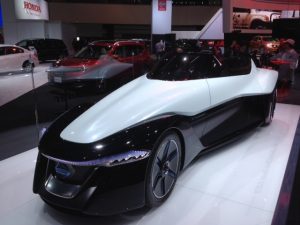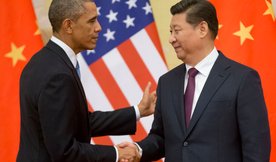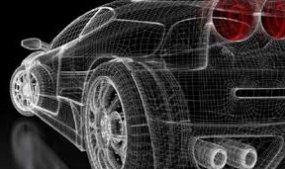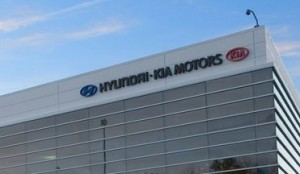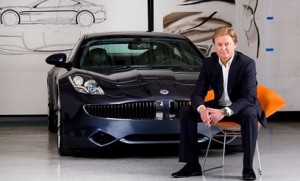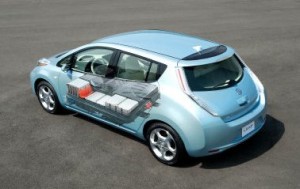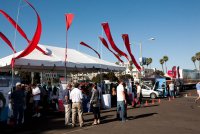 It’s that time of the year again – time to plan for next year. Auto shows, fleet events, AltCar Expo, ACT Expo, electric vehicle conferences…….. Here’s a list of events to consider attending. And don’t forget about making good efforts to get on their speaker, panel moderator, exhibitor, and sponsorship lists. Plus, at the end of this event list there’s yet another list: Ways to make the most of events and conferences, even if you hate going to them.
It’s that time of the year again – time to plan for next year. Auto shows, fleet events, AltCar Expo, ACT Expo, electric vehicle conferences…….. Here’s a list of events to consider attending. And don’t forget about making good efforts to get on their speaker, panel moderator, exhibitor, and sponsorship lists. Plus, at the end of this event list there’s yet another list: Ways to make the most of events and conferences, even if you hate going to them.
Auto shows: Here’s the big ones for next year…..
North American International Auto Show
Jan. 12-25 in Detroit
AKA Detroit Auto Show, this car show is usually considered the biggest one of the year – with its car and truck of the year awards, unveilings, speaker list, and the tradition of being the first big auto show right after the first of the year in Motor City.
Washington Auto Show
Jan. 23-Feb. 1 in Washington DC
New York International Auto Show
April 3-12, NYC
LA Auto Show
To be determined
National Biodiesel Conference 2015
Jan. 19-22, Ft. Worth, Texas
3rd Annual Clean, Low Carbons Fuel Summit
Feb. 3 in Sacramento
Policy makers and industry leaders meet in the capitol to discuss AB 32 cap and trade funds, Low Carbon Fuel Standard, and other pressing issues in California. (And don’t forget about the Blue Sky Award next week Tuesday in Los Angeles.)
SAE 2015 Hybrid & Electric Vehicles Technologies Symposium
Feb. 10-12 in Los Angeles
GreenBiz 2015
Feb. 17-19 in Phoenix
Energy Independence Summit
Feb. 22-24 in Washington DC
The Work Truck Show
March 4-6 in Indianapolis
Work truck fleet owners, managers, and upfitters meet; it’s held in conjunction with the NTEA convention and Green Truck Summit.
NAFA 2015 Institute & Expo
April 14-17 in Orlando
The annual conference for fleet managers and industry suppliers; including clean transportation symposiums with Calstart.
Electric Drive Transportation Association
The leading electrified transportation group is supporting two conferences next year –
28th International Electric Vehicle Symposium (EVS) and Exhibition
May 3-6 in Goyong, Korea
Plus, partnering with ACT Expo 2015 during that time
ACT Expo
May 4-7 in Dallas
National Drive Electric Week 2015
The fifth annual event will be during the week of Sept. 12-20 in cities across the country.
The Battery Show
Sept. 15-17, Novi, Mich.
Electric & Hybrid Vehicle Technology Expo
Sept. 15-17, 2014 in Novi, Mich.
2015 NGV North American NGV Conference & Expo
Sept 15-18 in Denver
3 AltCar Expos
AltCarExpo Texas
To be determined
Bay Area AltCar Expo
To be determined
AltCar Expo
Sept. 18-19 in Santa Monica, Calif.
Meeting of the Minds
Oct. 20-22, Richmond, Calif.
Now in its ninth year, Meeting of the Minds brings together a carefully chosen set of key urban sustainability and connected technology stakeholders, and gathers them around a common platform in ways that help build lasting alliances.
There are a lot of excellent events to attend – and this list will grow when you start counting the important meetings in your local market that you need to attend for networking and staying current on what your peers are saying. But what if you don’t like going to any of them, or you’re so busy that it adds to the pressure of getting a lot of work done on your heavy schedule?
Here’s a list of action steps that are working for me, and that come from peer feedback and a few good articles that I’ve read……..
- Plan ahead and schedule meetings. Look at the conference schedule and think about what you’d like to accomplish during that time. There are probably a handful of people you want to talk to, and they’re going be very busy during that week. So send them an email or make a phone call a week or two early, and set up a good time for a meeting.
- Don’t regret missed opportunities. There may be a location in that metro area that you could have visited if you’d gone a day early, and it needs more relationship-building time. There likely will be time-conflicting meetings that you need to attend and have one of your co-workers or colleagues attend the other one for you, to take notes and shake hands. Schedule that ahead of time. Keep in mind what your travel time will be like and how it will affect meeting attendance. If traveling there wipes out a whole day, consider leaving earlier to not miss it; or to make sure somebody will be there representing you.
- Collect all the content that you can. Don’t miss out on the excellent show coverage and other content you’ll need to gain insight on what was covered at all the speaker panels, product launches and announcements, social gatherings, keynote addresses, etc. Sometimes (such as at ACT Expo) there’s a daily newspaper given out, and the conference folders many times include white papers and press releases. There might also be emails sent out and more information (like special reports) posted on the conference’s website, blog, or social media sites. Local and business media will be covering the event by video, print, and online media – don’t forget to search for it when you get back.
- Devote a few hours for review and follow-ups once you get back. You’re probably going to be burned out and needing to catch up on things that happened while you were gone. It’s a good idea to build in two-or-three hours soon after you return to review your notes, content, news coverage of the event, emails you received, insights and ideas you gained, etc. Adding follow-up actions to your business plan is a good idea. Don’t contact people that you connected with right away (like the next morning), but don’t let it get too far away. It’s a shame to lose good opportunities.

